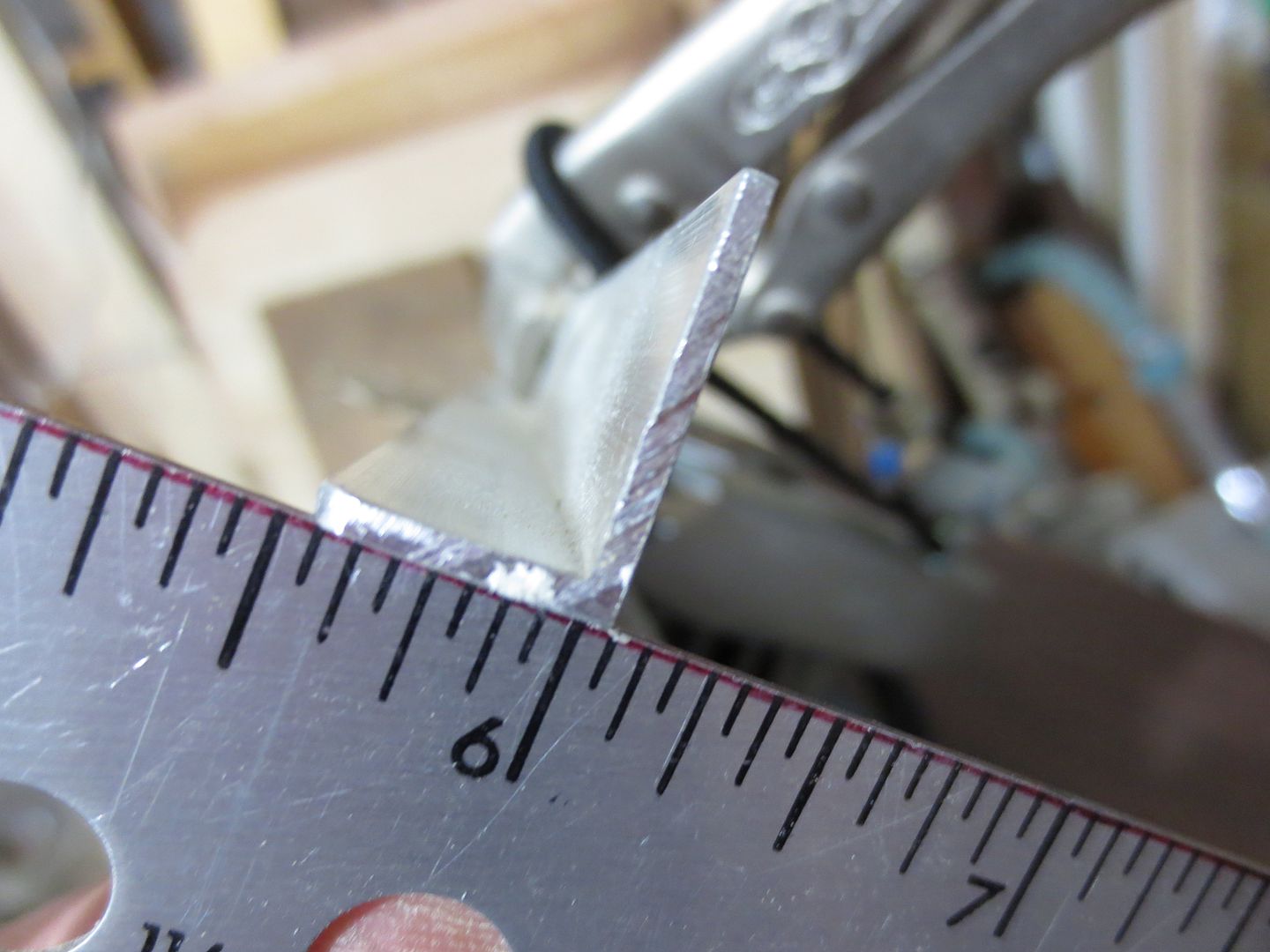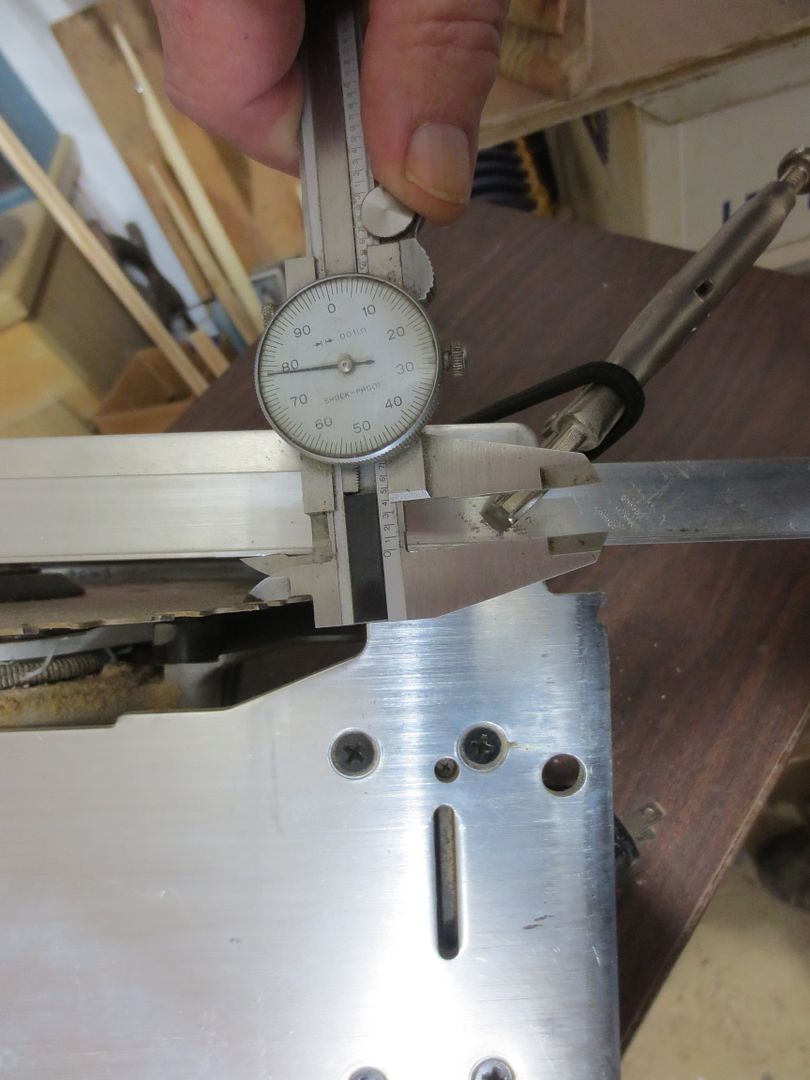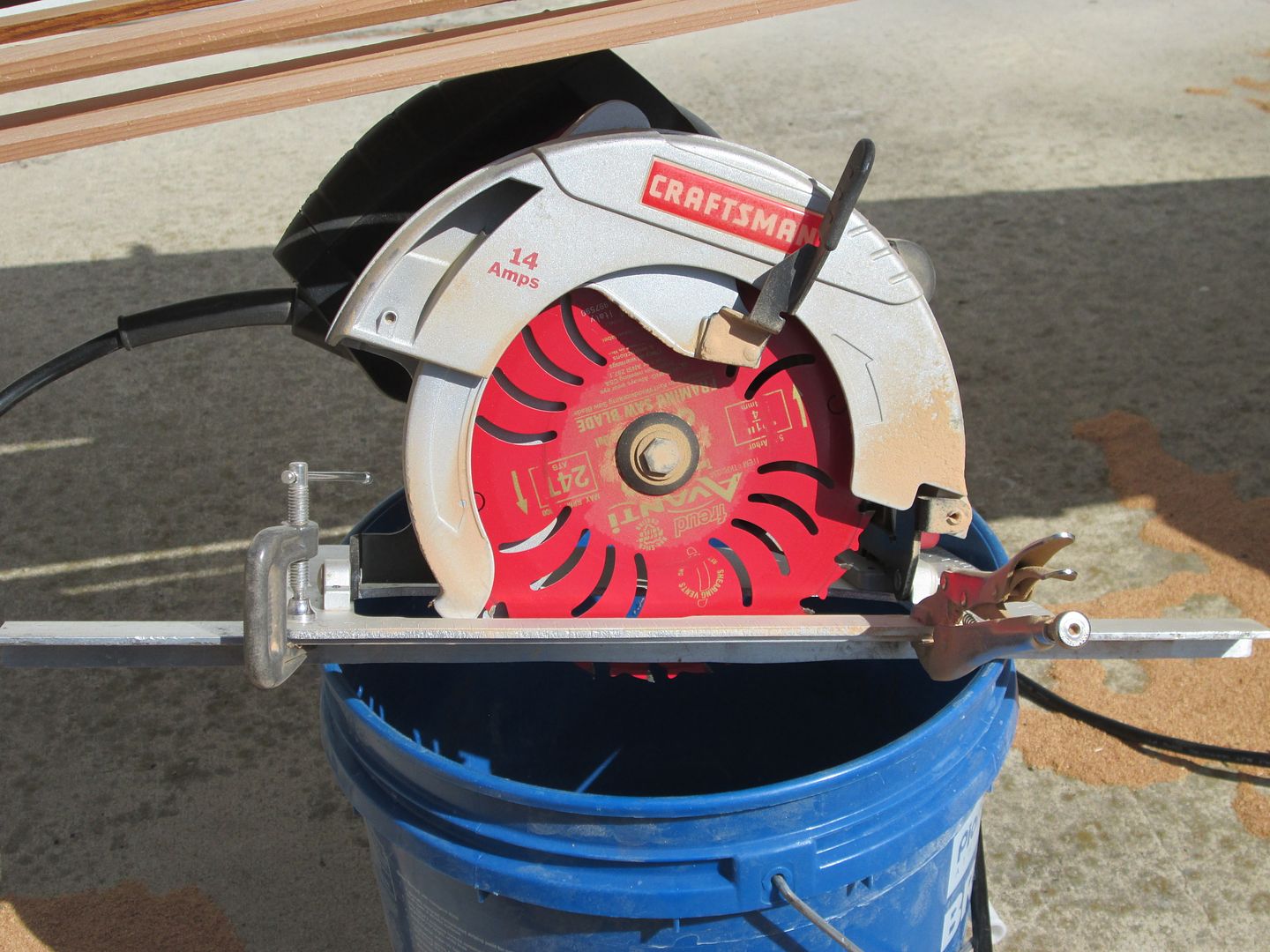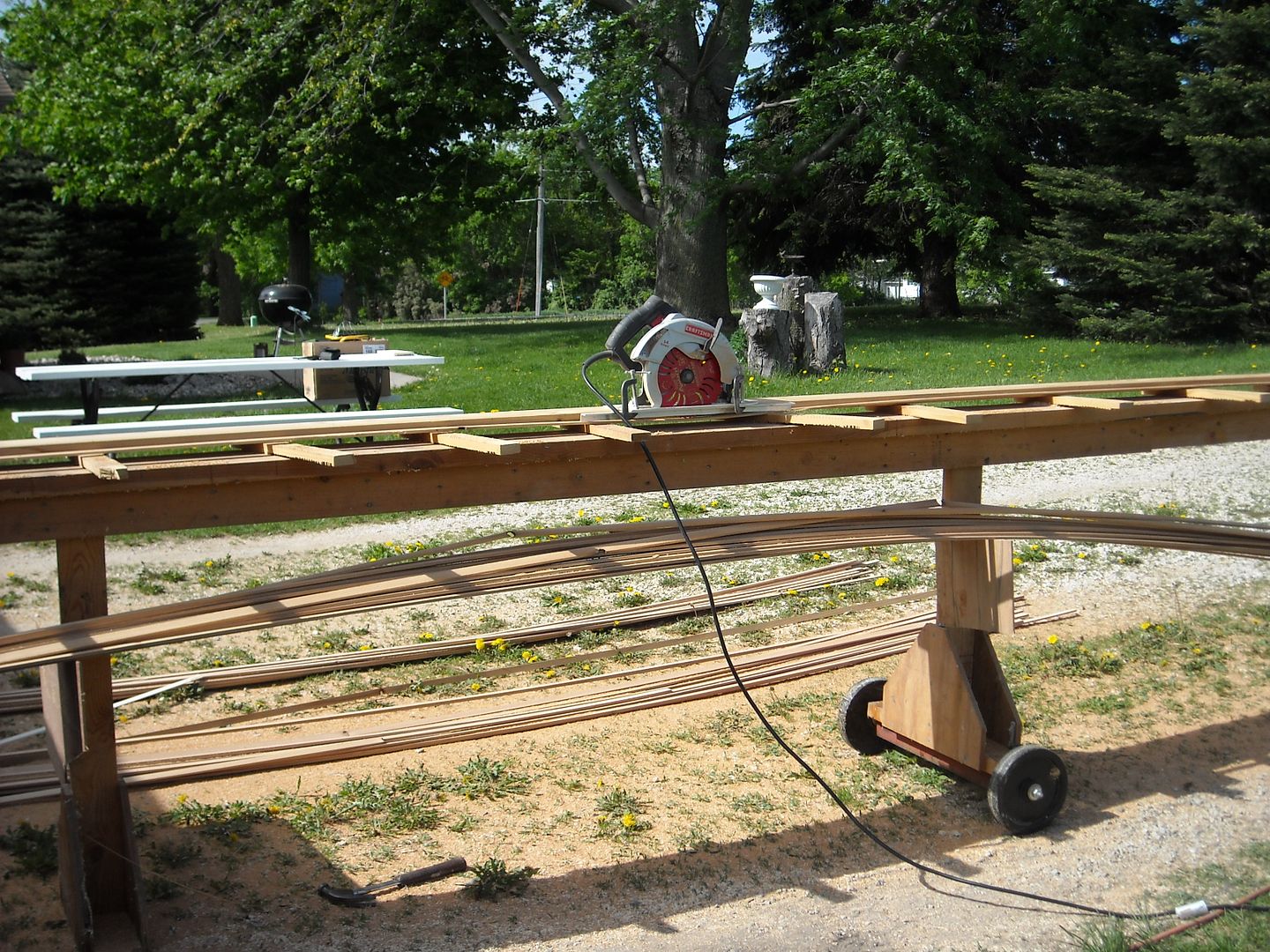First off, The Disclaimer. I want to emphasize ! Safety First ! Read and follow the instructions provide by the power tools makers for thier tools.
Protect your eyes, lungs, limbs, and hearing. And in that order of importance.
This is how I cut my strips, I take no responsibility for the actions of others, if they choose my methods.
Over the years, I've preached the benefits of cutting your own strips, using the skilsaw method. Here are some tips, and precautions, when cutting your own strips
It's getting closer to Spring, and the time of year, I traditionally cut strips. I still do it in the Spring. And Outside,to keep as much dust out of my shop, as I can.
A saw of choice? Anything in good condition, with 13 amps or more. 15 amps is better, they cut faster, and smoother.
A good power cord. I use a 12 gauge 25 ft. 14 gauge is OK, but nothing lighter.
I clamp a fence, made from a piece of 1/2" x 3/4" aluminum angle, about 16" long, to the base of the saw. The 1/2" side of the fence runs against the side of the plank. The reason for the the 1/2" ? When cutting a thin plank, the fence might bump the cleats, that the plank rests on, causing a bad cut.
I fasten this fence, with a small C- clamp in the back, and a small Vise grip on the front. The Vise grip makes a nice handle, and keeps your hand away from the blade.
The real beauty of the skilsaw system, other than being economical, is how accurately it can cut strips ! If you take the time to accurately set your fence, there is absolutely NO NEED to run your strips through a planer ! Saving money, time, and tool costs !
When setting the fence, be sure the saw is unplugged, when ever making adjustments. Lower the blade to its deepest cutting position, and while clamping the fence to the saw base, use a caliper to measure distances, front and back, between the fence and blade. Make them equal, and at the desired thickness. And you are half way there.



A good 24 tooth blade is all you need. Blades with more teeth, drag more and really don't make a smoother cut. Use a good quality blade. Anything made by Freud is fine.

A 5 gal bucket makes a fine saw stand. It keeps the saw out of the dirt and handy. No bending all the way over to pick up the saw. Always be careful of the saw blade, as cutting such thin strips, makes the blade guard ineffective.

Use your strongback, that you are going to build your canoe on, as a work table to hold your plank while cutting strips. The second best thing to use that strongback for !
Note the sacrificial cleats on the strongback. They are placed about every foot, and save the strongback from damage.
More later. on choosing, and cutting planks.
Jim
Protect your eyes, lungs, limbs, and hearing. And in that order of importance.
This is how I cut my strips, I take no responsibility for the actions of others, if they choose my methods.
Over the years, I've preached the benefits of cutting your own strips, using the skilsaw method. Here are some tips, and precautions, when cutting your own strips
It's getting closer to Spring, and the time of year, I traditionally cut strips. I still do it in the Spring. And Outside,to keep as much dust out of my shop, as I can.
A saw of choice? Anything in good condition, with 13 amps or more. 15 amps is better, they cut faster, and smoother.
A good power cord. I use a 12 gauge 25 ft. 14 gauge is OK, but nothing lighter.
I clamp a fence, made from a piece of 1/2" x 3/4" aluminum angle, about 16" long, to the base of the saw. The 1/2" side of the fence runs against the side of the plank. The reason for the the 1/2" ? When cutting a thin plank, the fence might bump the cleats, that the plank rests on, causing a bad cut.
I fasten this fence, with a small C- clamp in the back, and a small Vise grip on the front. The Vise grip makes a nice handle, and keeps your hand away from the blade.
The real beauty of the skilsaw system, other than being economical, is how accurately it can cut strips ! If you take the time to accurately set your fence, there is absolutely NO NEED to run your strips through a planer ! Saving money, time, and tool costs !
When setting the fence, be sure the saw is unplugged, when ever making adjustments. Lower the blade to its deepest cutting position, and while clamping the fence to the saw base, use a caliper to measure distances, front and back, between the fence and blade. Make them equal, and at the desired thickness. And you are half way there.



A good 24 tooth blade is all you need. Blades with more teeth, drag more and really don't make a smoother cut. Use a good quality blade. Anything made by Freud is fine.

A 5 gal bucket makes a fine saw stand. It keeps the saw out of the dirt and handy. No bending all the way over to pick up the saw. Always be careful of the saw blade, as cutting such thin strips, makes the blade guard ineffective.

Use your strongback, that you are going to build your canoe on, as a work table to hold your plank while cutting strips. The second best thing to use that strongback for !
Note the sacrificial cleats on the strongback. They are placed about every foot, and save the strongback from damage.
More later. on choosing, and cutting planks.
Jim

